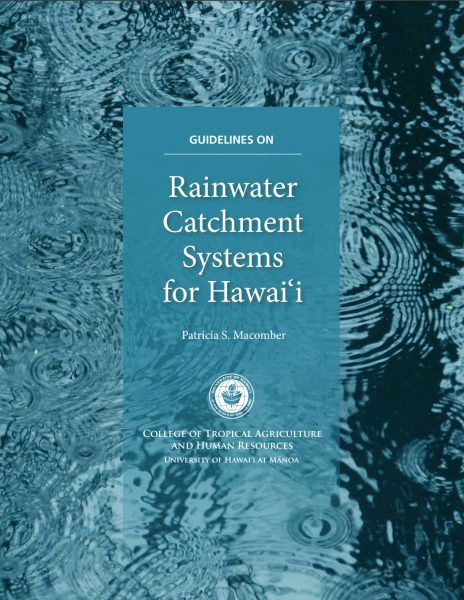Frequently Asked Questions
Below are some of the most commonly asked questions about Water Tanks and Rainwater Catchment Systems for your reference. Please contact us if you have questions which are not covered here.
Is catchment water clean enough to drink?
A residential water supply that collects rainwater stored in a catchment tank can be much safer and more reliable than most municipal water sources. Many large cities and towns are built on rivers or other rain-fed water sources. Unfortunately, pharmaceutical residue and other contaminants cannot be completely removed from our municipal water supply with any present water treatment systems. Even with chemical additives, trace amounts of drugs and biological contaminants can be found in ground and municipal water supplies.
This points out the need for a properly set up rainwater catchment system that you have complete control of. Your system will include a food grade liner, a first flush diverter, floating intakes, a dual filtration system and a UV sterilization unit. A well-planned and complete rainwater catchment and storage system will provide safer, cleaner and better tasting water than can be obtained for residential use from any other source.
What size of tank would an average family of 4 need to supply all their household water?
Rainfall can vary between areas across the island. Using data from the government about rainfall levels in Hawaii, coupled with insurance regulations, we have found that a 10,000 gallon tank is often the best solution for the average family here in Hawaii. For your specific sizing needs we can determine the best solution based on your location, known rainfall, available land area, along with your roof size and gutter systems, as well as other variables to determine the optimum tank size for you.
Can catchment water be microbe free?
Yes, with the addition of a UV sterilization unit. With a UV system, you control the purity and chemical composition of your own residential water supply.
How do I know how much water my roof will catch?
First, determine the area of your roof. For example, if the measurement of your roof is 36 x 36 feet. including the eaves, your roof area is 1296 square feet. Multiply this by 0.625 gallons of water per inch of rainfall in your area. In our example, that is 1296 sq. ft. x 0.625 = 810 gallons per inch of rainfall. A home in Hawaiian Beaches that gets 101.79 inches of rain per year would thus yield about 101.79 x 810 = 824,499 gallons of caught water per year. Use these figures to help determine rainfall in your area.
What kind of maintenance regime is recommended for a residential water tank?
An average well-placed tank will require an annual cleaning of the bottom of the tank, monthly changing of sediment filters, bimonthly changes of secondary filters, and annual replacement of UV bulbs. A general cleaning, maintenance of the tank finish and removal of debris from the outside of the tank should be done annually. Take care that any vegetation is not allowed to grow near the tank.
Roots will find water and can potentially puncture the liner if allowed to grow unchecked. A 6 to 12 foot of area around your tank should be kept free of vegetation and trimmed regularly.
Is there a way to keep rain gutters debris-free?
Although no one item will provide a complete solution, the best choice is to install a seamless gutter system and then install “leaf-eaters or leaf-beaters” in-line. It is best if debris can be filtered before it gets into your tank. Keeping contaminants out of your tank is easier than removing them.
Does the size of my roof matter?
Size always matters! The larger the area and the more frequent the rainfall in your area, the smaller your tank can be. See above about the size of tank needed for an average family in Hawaii.
Can animals drown in my catchment?
Yes they can if they are able to get inside the tank. The best solution to keeping unwanted visitors out of your tank is to have a metal cover installed. Another less expensive alternative is a mesh or premium poly tank cover, securely fastened with a support system in place. This is more economical than the metal cover, but will require more maintenance, and is less secure.
What is a gravity flow vacuum?
A gravity flow vacuum is a vacuum hose, head and pole, and is used to clean the bottom of catchment tanks. The tank should be cleaned using this method once a year or more often if needed, to vacuum any organic materials that may have accumulated on the bottom of your tank.
What is a “first flush diverter” and do I need one?
A first flush diverter is a device which diverts the very first flush of water from each rainfall event away from your tank. By diverting this first flush rainfall from your tank, you will need to clean your tank less often and prolong the usable life of your filters. Every rainwater catchment system should have a diverter installed on each downspout that goes to the catchment tank.
What is the overall annual cost of water on a typical home catchment system?
An average residential catchment system will require a UV bulb replacement annually at a cost of about $70 - $90. Sediment and carbon block filter life depends on filter size, micron rating, water usage, and sediment buildup in the catchment tank. On average most customers spend about $15-$20 a month for replacement filters. Add the cost of electricity to run a pump from the tank to your home, an average cost of $10-15 per month. The overall operating cost of a complete rainwater catchment system can be as little as $370 per year or $30.83 per month, for a typical Hawaii home. This compares with an average municipal water bill of $40-$50 month at today’s pricing.
Do catchment systems require chemicals?
We do not recommend adding any chemicals to rain water.
Are catchment systems vulnerable to pollution and acid rain contamination?
Properly covered and outfitted with a first flush system, your tank can be the cleanest water source you can obtain for residential water. However, if the rain in your area is particularly acidic you may want to add a little baking soda from time to time to keep your PH balance within a safe range. You can monitor PH levels with a pool type tester. Maintain your tank as close to a neutral PH as possible.
Can I grow my own fish in my backyard?
A low walled, large diameter steel tank with an approved food grade liner is used by many to grow fish across Hawaii and throughout the world. We recommend a 30 mil black liner for light agricultural use, home use or in decorative fish ponds. Many families in Hawaii grow fish in ponds lined in such a fashion and incorporate it into their garden landscape for a beautiful and productive water feature.
What is required as investment in equipment to set up an aquaculture farm on my property?
A small 3100 gallon system with a simple circulating pump could be set up for as little as $2,000-$3000, but the cost of implementing an aquaculture system for home or commercial use can vary depending upon the scale of your venture. We can provide an estimate based on the scope and size of your project during a brief consultation.
Can I irrigate my farm with rainwater tanks?
Yes, many farmers use this method to save money vs. using trucked in or municipal water. It is a safer, cleaner, less expensive and greener way to irrigate a farm of any size.
What happens if annual rainfall drops in my area?
If your system is properly sized to begin with this should not be an issue. If you find yourself running out of water several times a year, but during heavy rains your overflow is working overtime, you may need a larger or secondary catchment tank. If your needs increase you can always add to the size of your catchment capacity to avoid the cost of buying supplemental water.
Guidelines for Rainwater Catchment Systems for Hawaii
CTAHR Hawaii - University of Hawaii Manoa
Learn everything you need to know about rainwater catchments and water supply in Hawaii with this free guide by Patricia S. Macomber published by CTAHR Hawaii - University of Hawaii Manoa. See Hawaii Rainwater Catchment Systems Program for more resources.

